It's very clear from our trip that Indonesia is still reeling from the closures due to COVID. There was virtually no financial support for workers who lost their jobs because tourism disappeared overnight. The resort continued to make its payments to the local village to ensure that the reefs were kept pristine, but staff were sent home as there was no income to cover them. Lorenz, the founder and leader of Wakatobi, said that what kept them afloat was the many guests who had made deposits but didn't request refunds being eager to help the resort make it through (like us). Speaking with staff it's pretty clear that COVID was a severe body blow and that recovery isn't nearly complete yet.
A few words on underwater photography in general. Water absorbs colors, starting with red. After all, that's why it's blue. This means that photos taken underwater won't be accurate for color without an external light source. I use strobes but have no video light so my videos are "strange". Water also fills up with all sorts of small things, such as plankton, other critters, etc., each of which bounces strobe light back to the camera. You will see this in photos as white or red dots. I don't always try to remove them, particularly for wide angle photos where there are so many. Fish move making them hard to photograph. Perhaps that's why I like critters. Plus I'm trying to hold still against currents and surge, obviously more of an issue with video.
(My underwater photos are linked here. Link is at the end as well.)
This was our sixth trip to Indonesia for diving and our fifth to the Wakatobi region. It's not a journey taken lightly - many hours of travel. So why do we do it?
It's all about getting to the Coral Triangle, the most diverse region on the planet. There are 605 coral species vs. 61 in the Caribbean. 37% of the world's coral reef fishes are at home in the Coral Triangle; there are 58 species of Butterflyfish vs. 5 in the Caribbean. The reefs are in outstanding condition (even with ocean acidification and temperature rises which are killing the corals). And the waters are warm and clear.
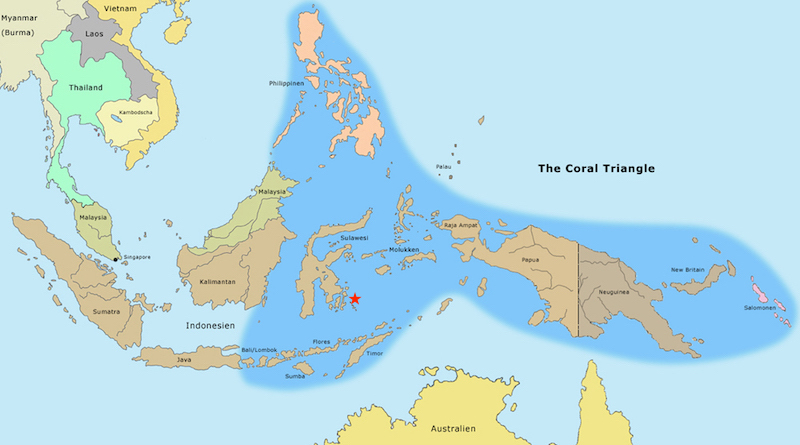
We had reserved for 2020 but kept pushing back until we decided to go for it.
We chose to return to the Wakatobi Dive Resort where we had been in 2012, 2013, 2015 and 2018. It's that good (see the 2015 writeup for more details about how we were treated). (Wakatobi is an amalgamation of the names of the main islands that form an archipelago off Southeast Sulawesi - Wangi-wangi, Kaledupa, Tomia and Binongko.)
We departed on August 21st, flew IAD -> DOH -> DPS arriving on August 22nd; our return was September 12th, flying DPS -> DOH -> IAD arriving on September 13th. Other than the nights on the airplanes, we spent two nights on Bali, 14 at Wakatobi and a final four on Bali. Took 36 hours door-to-door going and 38 hours door-to-door returning.
This routing was new for us as was Qatar Airways. Business class for the beds and overall treatment. As was using cash instead of points. Ouch.
Checking in at the IAD Qatar Airways counter, we learned that carryon luggage was limited to half of what ours actually weighed (we were used to US airlines which restrict carryon size but not weight). This was not a matter of paying for overweight, but a non-negotiable limit. What did they suggest we do? Sit on the floor in front of the counter and take items out of the carryons and put them into the large checked luggage until we met the limits. This wasn't actually feasible and there was no way to acquire an additional suitcase. Back and forth until a supervisor came by and told the counter agent that it was okay to let us on as we were business class!
The Hamad Airport in Doha is best considered a top-end shopping mall with airline gates attached. Glitzy. Mobbed at midnight but much quieter at 8am. We chose a long layover vs. a one-hour one so had booked a room at the Oryx Airport Hotel which is inside security so no immigration and no luggage pickup/customs. Qatar's instructions didn't at all match what we found when we walked into the terminal. Kept walking and asking and asking and walking. There were no airport maps. The signs were very sketchy. Turns out that we landed in terminal D while the instructions assumed you were landing at A, B or C which are a long walk away from D. Of course we eventually got there and into our room, which was very pleasant and welcome.
A sample, not your average ice cream stand.
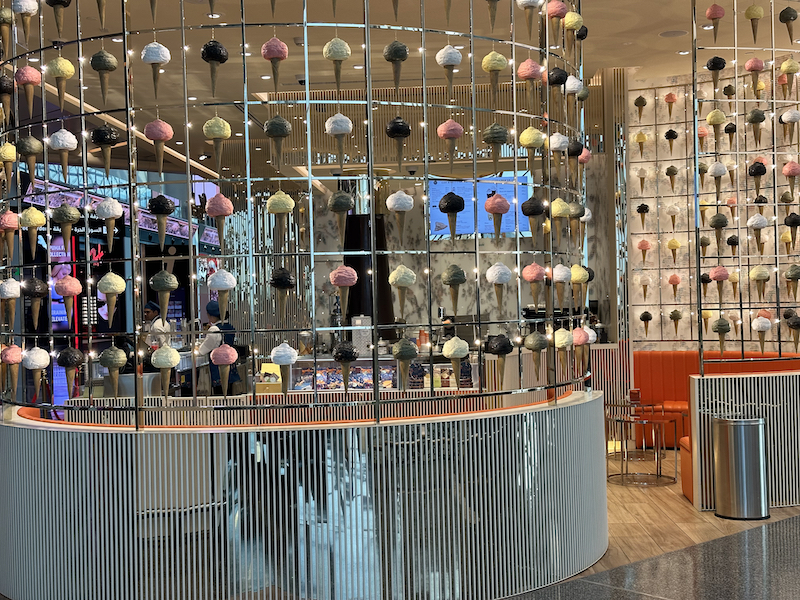
The business class lounges are genormous and full of a wide variety of food. Transit security, which we had to go through on the way back but not on the way there, had a business line which was much shorter than coach. If you're going to do this kind of trip, it's worth it to go business class for sure.
Our real concern was if the resort was going to be as special as it has been. The answer is YES. After closing completely for COVID, it is back to full staffing including many staff who were there before. Many buildings have been refurbished. The food was still excellent and includes more Indonesian dishes.
For a more thorough description of the result, see my 2018 report. But here are some photos to enhance that report.
This time it was my villa (that's my rock climbing club t-shirt)!
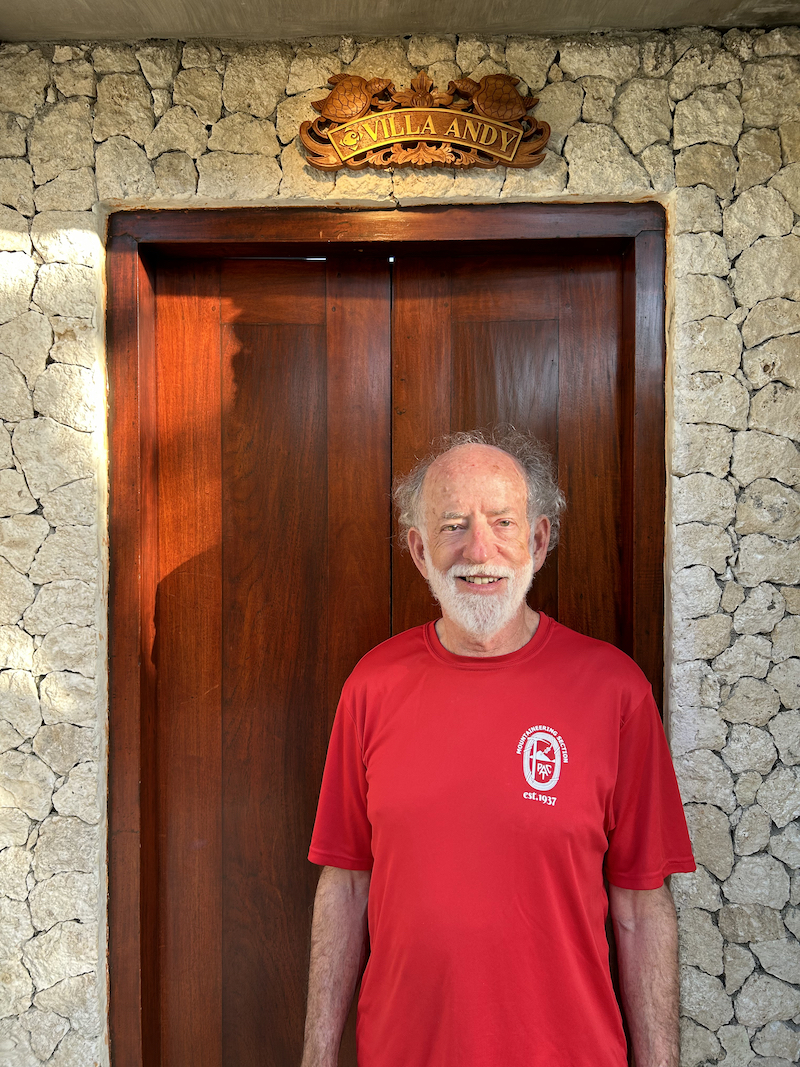
My camera rig is heavy but there was always a dive team member happy to schlep for me. (I machined the port front cover because it didn't come with one.)
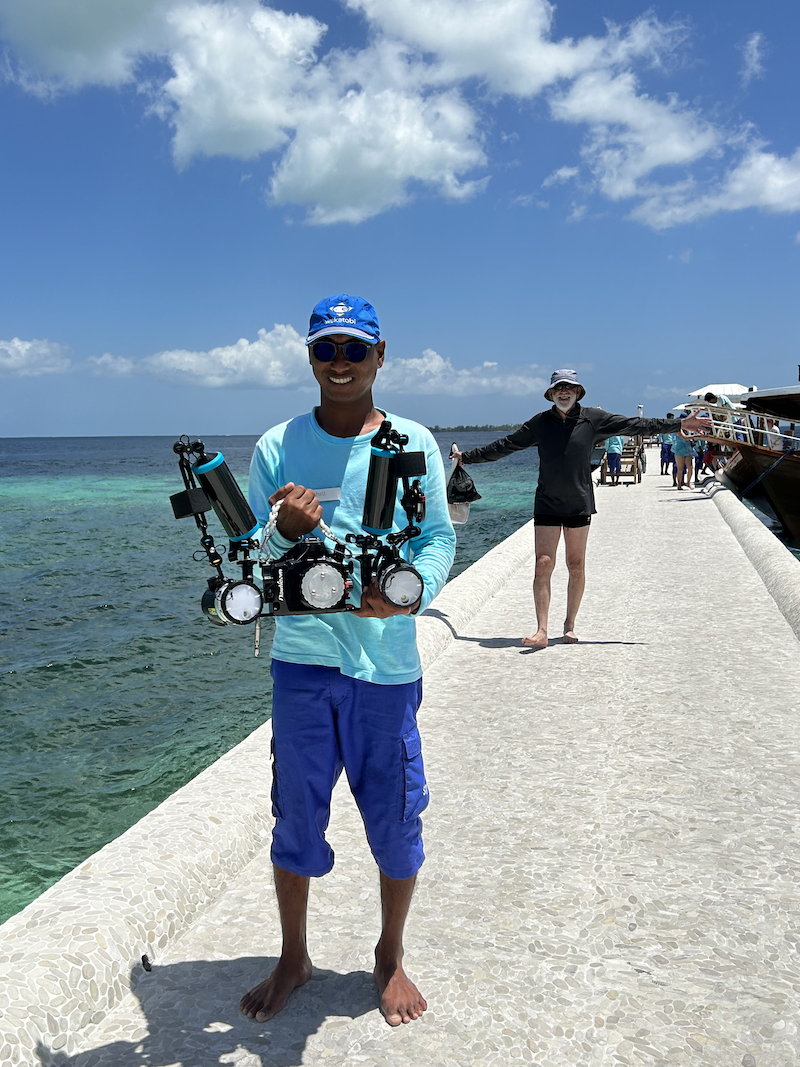
Except at low tide, the boats line up for the divers. (At low tide, water taxis are used as the boats can't get to the jetty.)
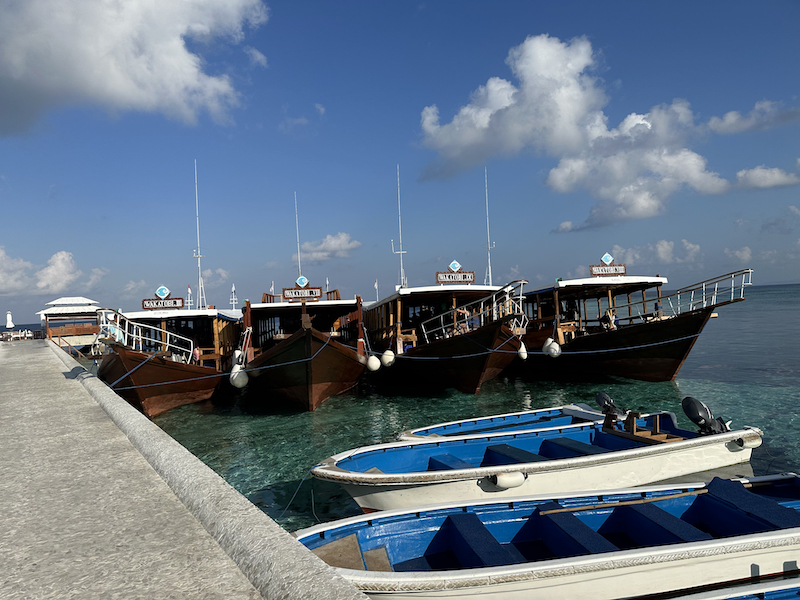
The traditional Indonesian style dive boats are big and comfortable. All gear is carried by dive staff. Tanks go in the middle, wet suits hang from the rack, other gear goes under your seat and there's overhead storage for personal stuff. Dive staff help you on with your gear for a giant stride entry or take it to the side opening for a sit entry. When you come back up, you wait for the boat to maneuver over to you and you come up the ladder with their help.
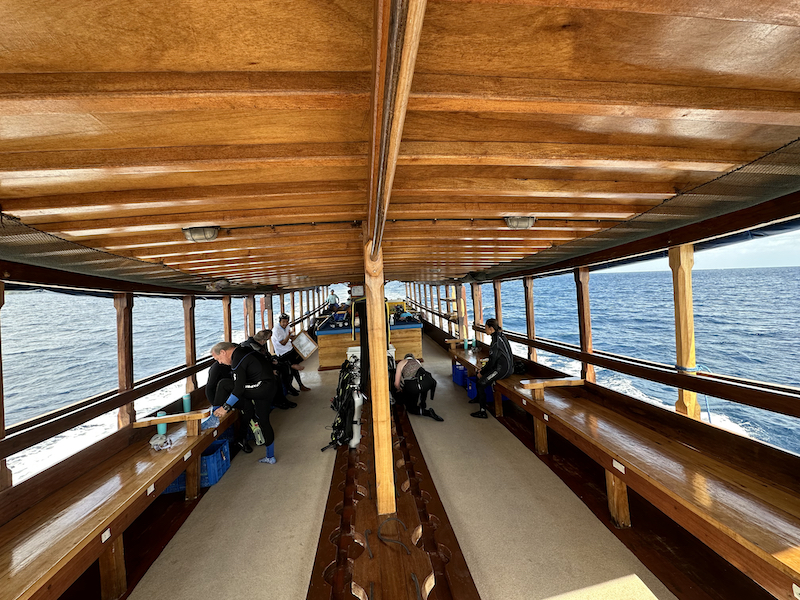
Staying in a villa brings your own private dive guide. Here's Shoko, master at finding tiny critters and generally keeping us safe. For each site, the dive guides draw maps and then brief their divers on the topography and what is typically seen. Somewhat sadly, September is the end of her 12 year career at Wakatobi as she moves back to Japan and the future.
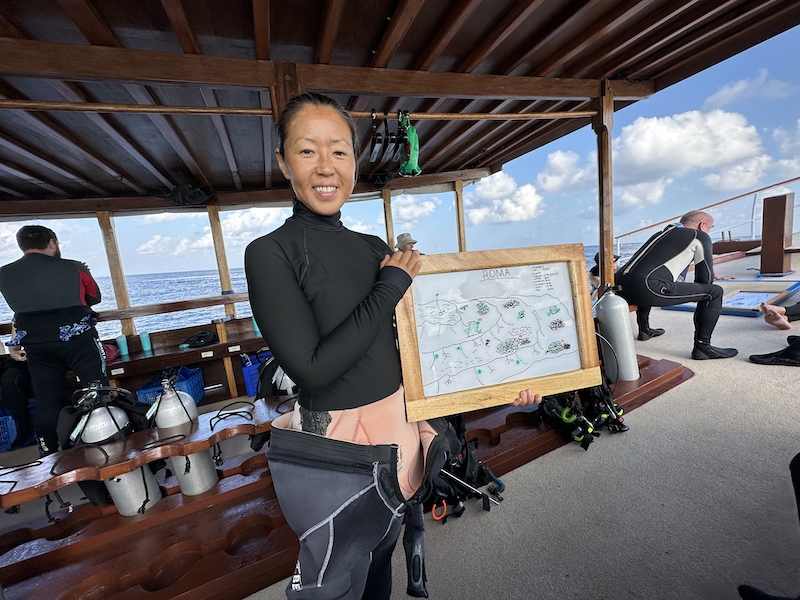
I passed another milestone while at Wakatobi and received a rather delicious reward.
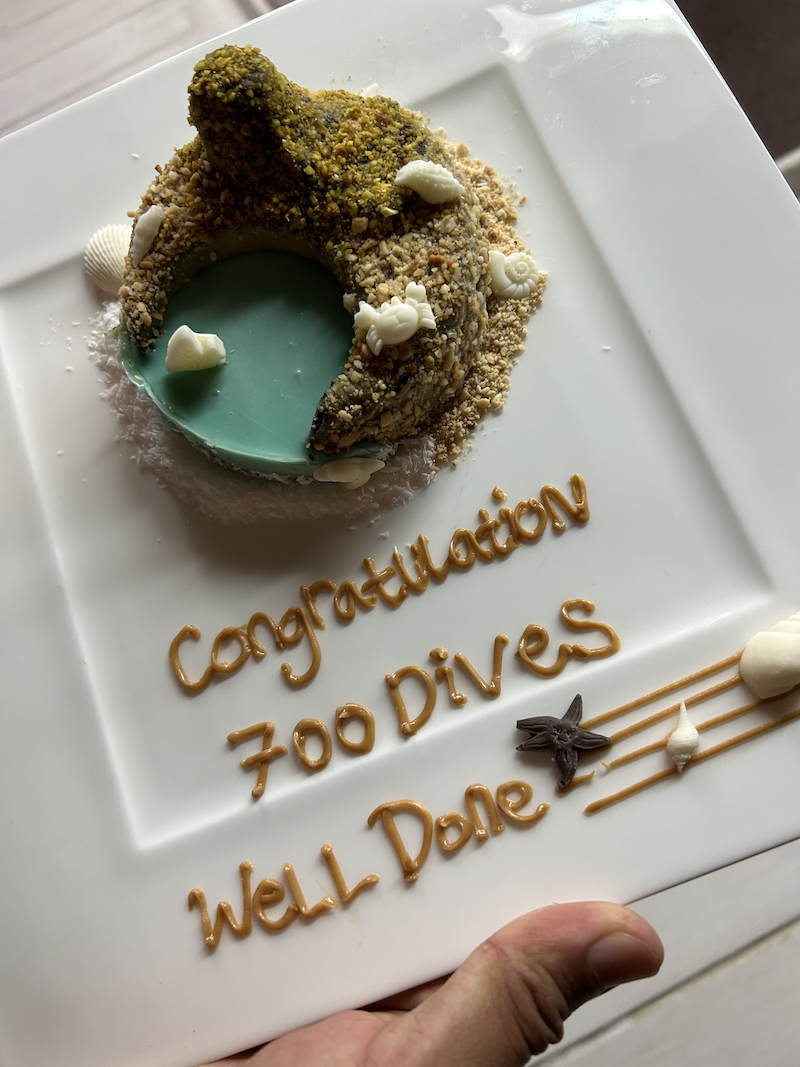
On the return through Bali we stayed at the Alila Uluwatu at the southern end of Bali. Next stop south is far Western Australia and then Antarctica. It is likely the most beautiful hotel I've stayed in. The restaurant etc. are at cliff edge while the suites (no rooms, just suites) layer up the hillside. Separate western and Indonesian restaurants. Thank you Hyatt points.
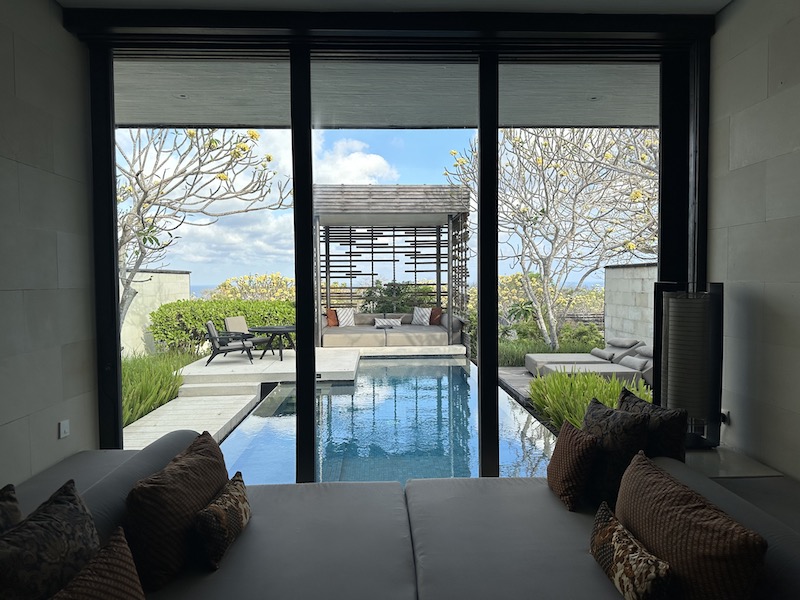
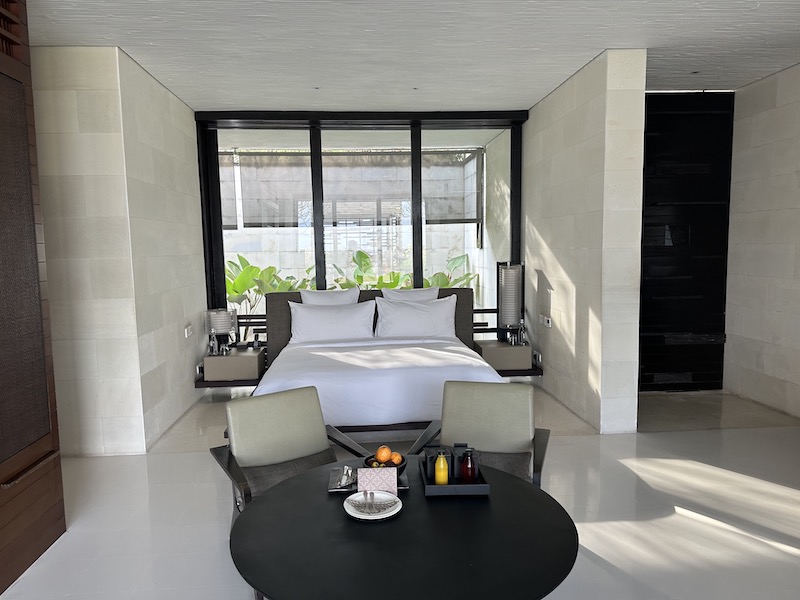
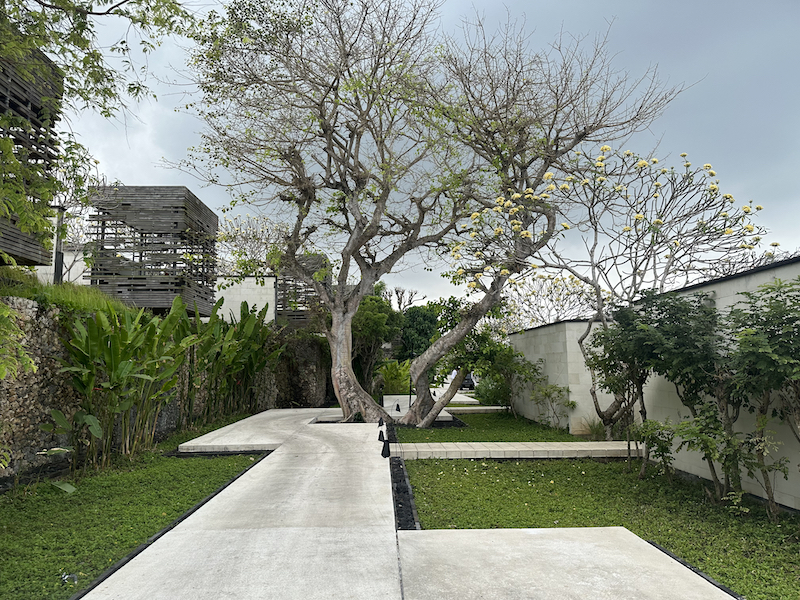
A sample from the restroom at the restaurant.
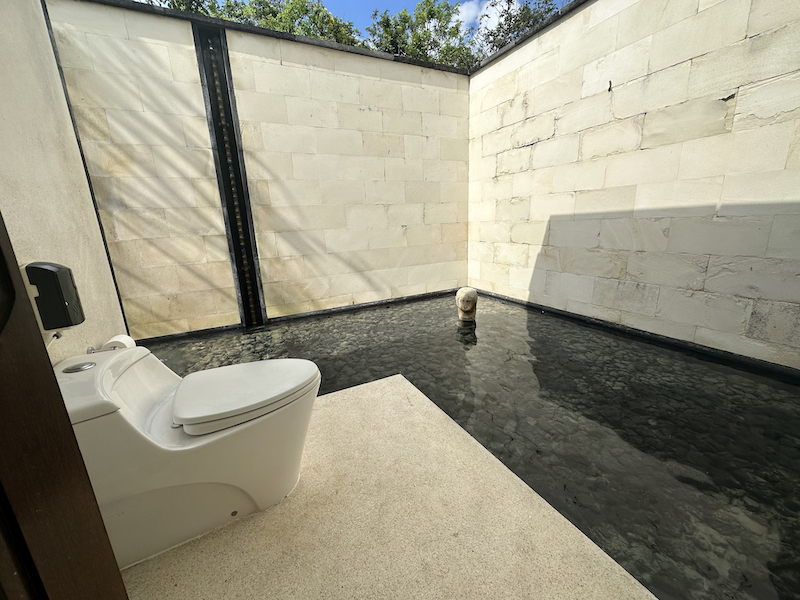
The bar/cigar lounge (which we did not frequent) is surrounded by the metal dies used to make Balinese batik.
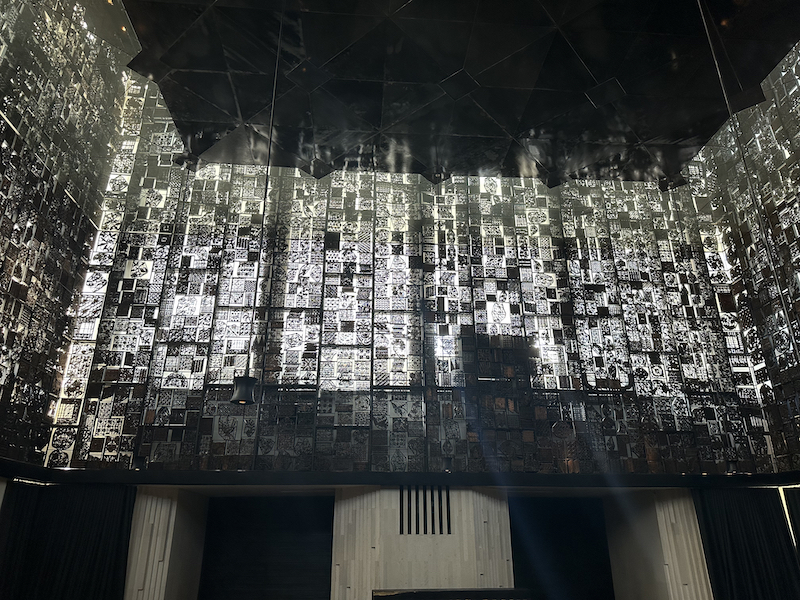
We were warned to keep our room sliding doors closed; here's why.
A few words on the identifications that I give in the photos. Identification is an effort fraught with issues. Underwater creatures have the distressing propensity to have different colors, patterns and even features for the same species. Juveniles often look nothing like adults. The key piece of information to identify a creature may not be in the photograph (either because it was hidden or I didn't know it needed to be recorded). Identification books show a single photo when the reality is much more complicated. So the identifications given in my photographs are those of an untrained amateur! If you have any corrections, I'm happy to hear them!
The whole trip was just amazing!
My underwater photos are linked here.